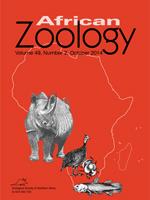Nile perch (Lates spp.) was introduced into Lake Victoria only five decades ago but is now well established and distributed throughout the lake. Given the extensive size of the lake, there is a possibility of isolation by distance that can lead to local adaptations. Microsatellite DNA variability was used to assess the genetic diversity and to define the population structure of Nile perch collected from 22 different geographical locations within Lake Victoria. In total, 432 individuals were genotyped at nine microsatellite loci. Analyses of multilocus microsatellite genotypes revealed that genetic diversity of Nile perch of Lake Victoria is relatively high (HE = 0.68). Results also reveal shallow but significant genetic differentiation (FST = 0.029, P < 0.05). STRUCTURE indicated that Nile perch of Lake Victoria was made up of two (K = 2) genetically distinct populations. Separate analysis for each of the two groups also revealed relatively high genetic diversity for each group (HE[N1] = 0.73 and HE[N2] = 0.64). These results are surprising given that Nile perch was only recently introduced and is known to be migratory by nature. We interpret these results in light of multiple introductions from two different source populations of Nile perch and discuss implications of these results for the region's fisheries management.
BioOne.org will be down briefly for maintenance on 14 May 2025 between 18:00-22:00 Pacific Time US. We apologize for any inconvenience.
How to translate text using browser tools
1 October 2014
Microsatellite DNA Analyses Reveal Population Subdivisions Among the Recently Introduced Nile Perch (Lates spp.) in Lake Victoria
Matthew T. Mwanja,
Vincent B. Muwanika,
Charles Masembe,
Wilson W. Mwanja,
Silvester Nyakaana
ACCESS THE FULL ARTICLE

African Zoology
Vol. 49 • No. 2
October 2014
Vol. 49 • No. 2
October 2014
Genetics
Lake Victoria
microsatellites
Nile perch




